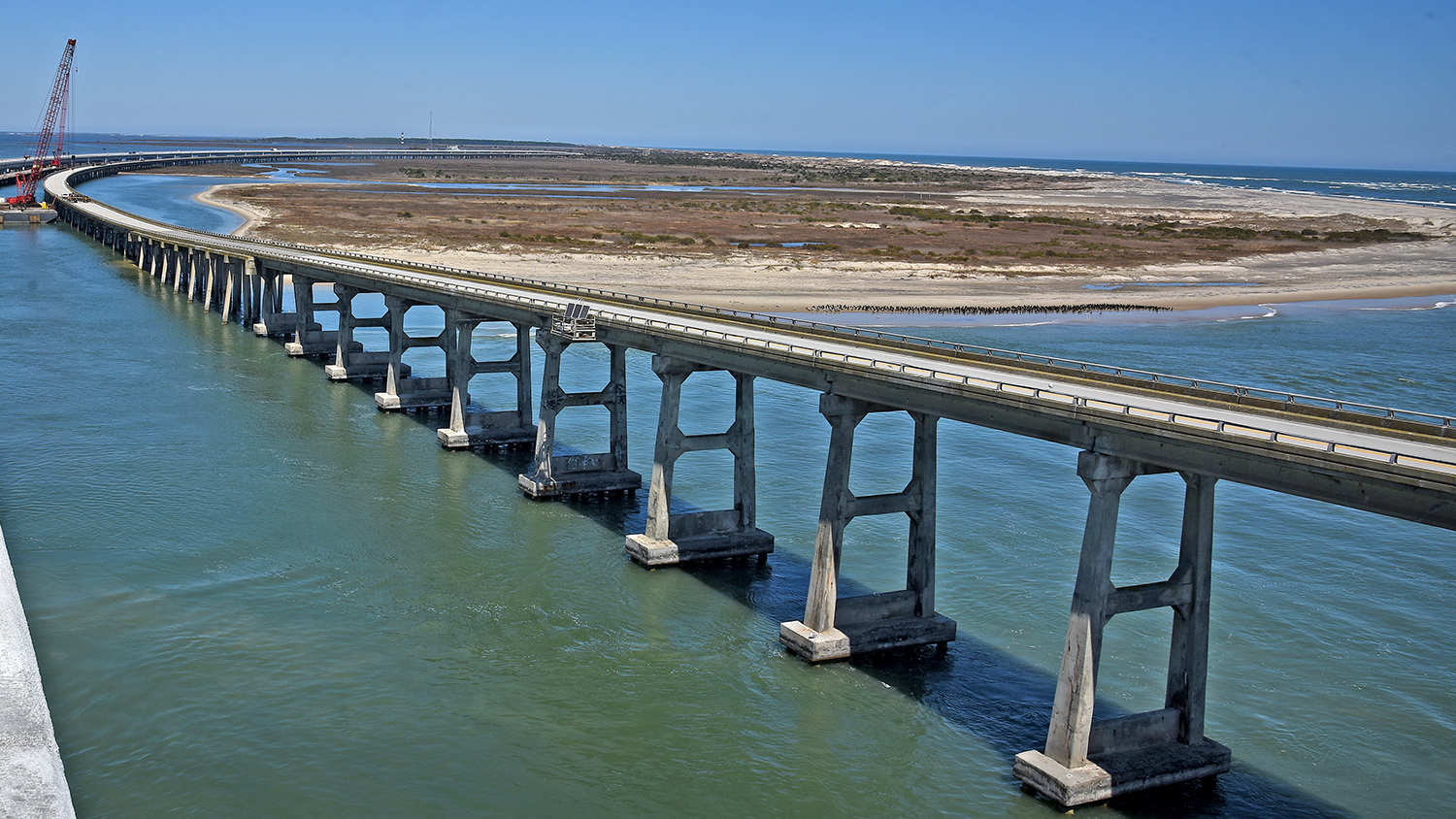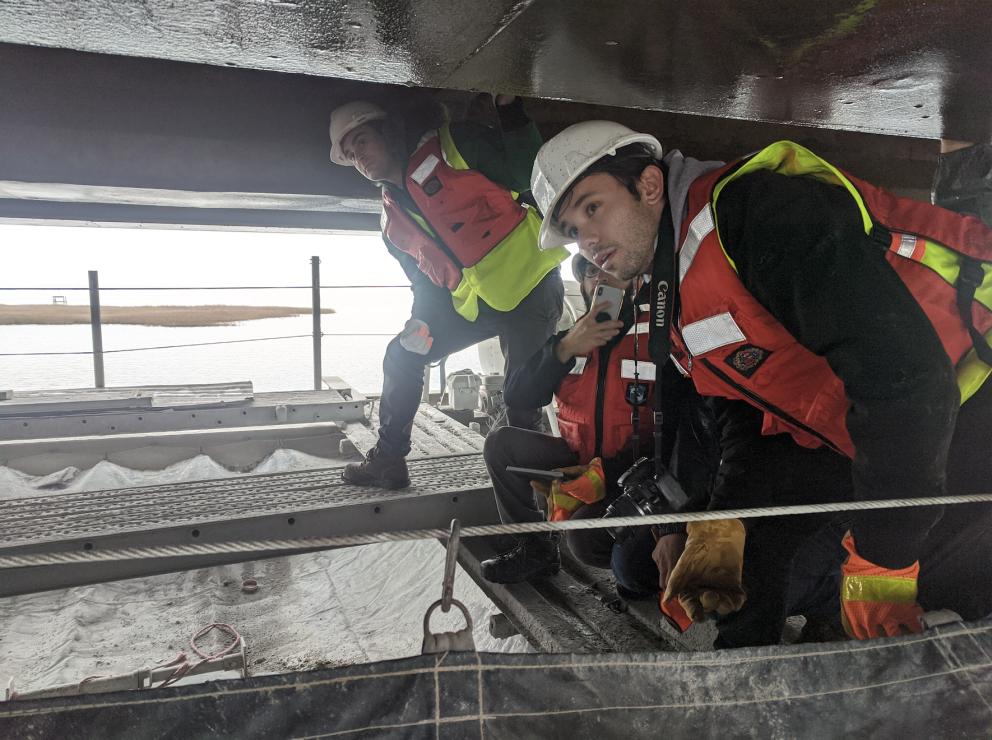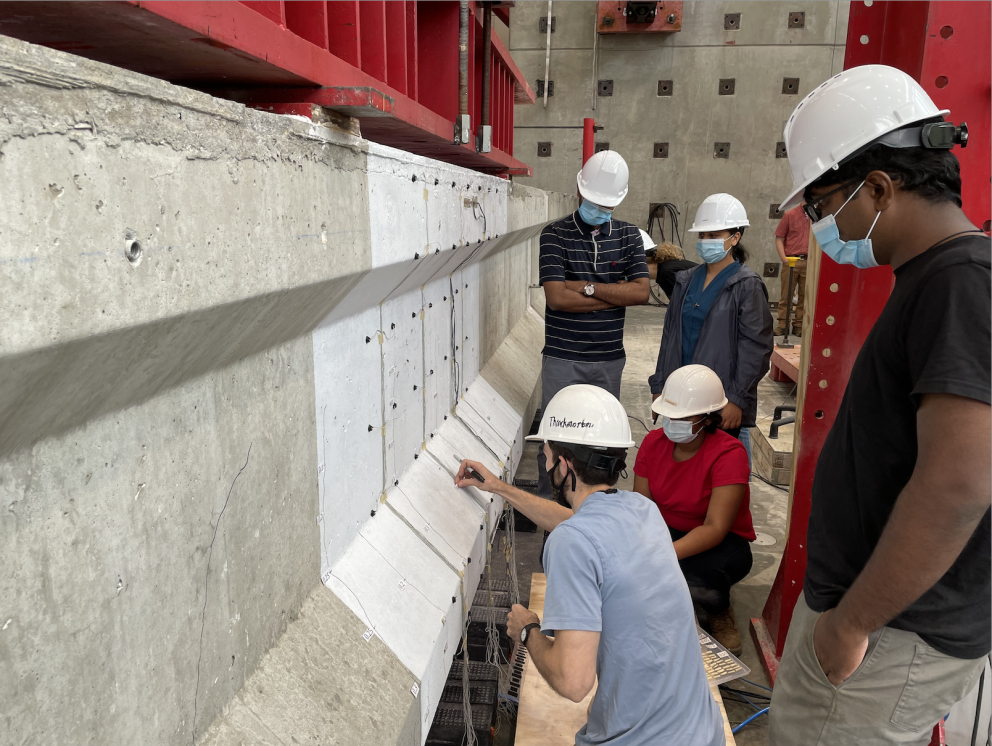The old Bonner Bridge provides a new kind of service for CCEE researchers

The Herbert C. Bonner Bridge was a vital lifeline to the Outer Banks, but it was replaced and deconstructed in 2019. CCEE researchers are testing some of the old bridge components to understand how it lasted so long, and how to better design and maintain future bridges.
When the Bonner Bridge opened over North Carolina’s Oregon Inlet in 1963, it was projected to have a lifespan of 30 years. It was a lifeline connecting the seven small villages on Hatteras Island to the northern Outer Banks. The bridge replaced a ferry service, and, after its opening, tourism blossomed along Cape Hatteras’ shore. The bridge endured the harsh Outer Banks environment for nearly twice its projected lifespan, but decades of stormy weather and the harsh saltwater environment led to millions of dollars in maintenance and repair costs. Bonner Bridge was officially replaced in 2019 when the long-awaited Marc Basnight Bridge opened after years of design and construction.
Now, Bonner Bridge is being deconstructed. Much of the concrete will go to create artificial reefs, but the old structure will provide ongoing service by helping researchers determine how to extend the service lives of concrete bridges.

Funded by the North Carolina Department of Transportation (NCDOT), Drs. Giorgio Proestos, Rudi Seracino and Gregory Lucier are conducting laboratory tests to understand how concrete bridge girders perform after nearly 60 years of degradation and use.
This deconstruction provides a chance to evaluate the aged girders of the bridge and to compare their performance with model predictions,” Proestos said. “This is an incredible opportunity to conduct full-scale load testing of multiple large girders that have been in service for almost six decades.
Evaluation of the Bonner Bridge girders will include full-scale load testing of multiple 61-foot-by-45-inch-deep prestressed concrete beams. The load testing is being conducted in the Constructed Facilities Lab (CFL) located on NC State’s Centennial Campus.

Prestressed concrete girders are built with high-strength steel strands that are stretched and used to compress the concrete surrounding them. This precompression helps mitigate cracking and therefore reduces the prevalence of steel corrosion and other forms of degradation. As concrete bridges age, this beneficial precompression reduces as a result of stresses relaxing in the steel strands, the concrete creeping under the compressive stresses and the concrete material itself shrinking over time. As a part of regular safety evaluations, prestress losses are estimated and used to determine which bridges should be retrofitted, repaired or require weight restrictions.
This research aims to better understand these long-term loss effects by conducting numerical analyses and large- scale structural tests of actual bridge girders that have been in service for many years. The research will result in recommendations and guidelines the NC DOT can use to decide which bridge structures can have their service lives extended.
This post was originally published in Department of Civil, Construction, and Environmental Engineering.


